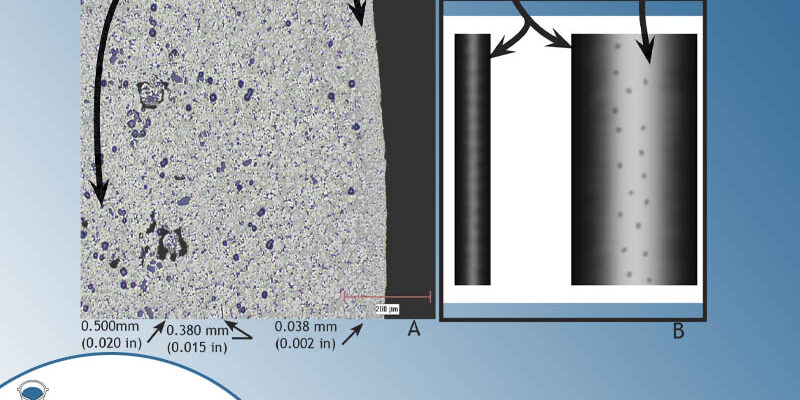What is porosity in die casting?
Porosity refers to small voids, holes, or pockets of air that are found within a finished part. These holes typically occur when air is trapped in the material being worked with. Porosity is a big concern in die casting, though it is typically acceptable in non-critical areas.
Porosity can happen in a variety of ways. Air can become trapped by the die cast machinery leaving gaps at the top of the die, it can occur when filling a mold too slowly, or when some of the material being used solidifies too soon. It can also occur when the air used to force molten metal into the mold isn’t completely forced out or able to escape through vents and overflows.
Causes of porosity in die casting:
• The design of the mold and cast parts
• The purity of the metal or alloy being used
• Pressure and shot speed of the machines
• Shrinkage of the material wall thickness
• Too much lubricant in the die
• Sharp corners in the mold
• Low metal temperatures
• Air trapped in the metal
How do you check for porosity?
• X-ray the finished material
• Using computerized tomography
• Cutting and polishing a section and then analyzing it under a microscope

Can it be prevented?
Porosity varies in severity and can occasionally be acceptable in the final product, but generally it is best to limit it as much as possible. There are so many areas that need to be closely monitored in order to avoid porosity – the die casting process (such as the design of the mold), purity of the metal, low metal temperatures, pressure and speed of the machines, and more.
The best way to minimize porosity is to make sure the engineers and the die caster are working closely together to provide strategic guidance from the very beginning of the project. In addition, making sure the die caster is experienced and is using only top quality materials also greatly reduces any possible issues with your die cast part.
Need a hand?
Early involvement with a seasoned die caster is essential in avoiding issues with your cast and any possible expensive corrective steps needed down the line. With over 74 years of experience in die casting, A&B Die Casting understands your materials, designs, and parts as well as the casting process factors that are most likely to cause different types of defects. This wealth of experience enables us to prevent many defects before they even occur. We can also assist with redesigning elements to address porosity-prone areas and shift them to locations that will not impact structural integrity.
If you are developing your own tolerance limits, the American Society for Testing and Materials (ASTM) lists the standards for porosity in castings on their website (https://www.astm.org/). They are an excellent resource for standards, books, journals, and articles for a variety of industries, materials, and products.
If you are concerned about the porosity of your casting, we recommend you contact us directly and chat about your specific project.
-A&B Die Casting
(877) 708-0009
www.abdiecasting.com
NOTE: Porosity photos included here are courtesy of the NADCA Product Specification Standards for Die Castings / 2015

